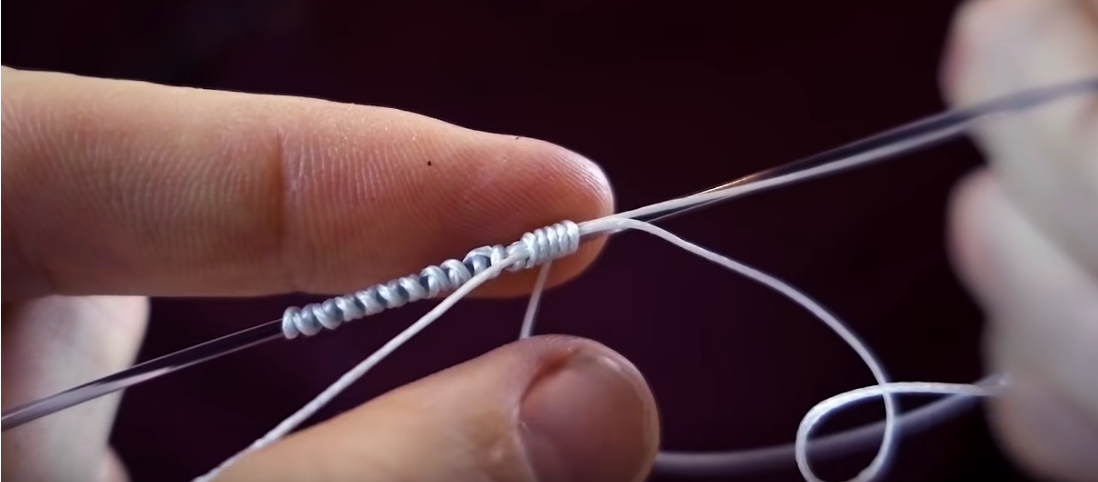“Why Knot!?!”
Courtesy of Vance McCullough
My ability to break things is remarkable. More than a talent, I’d call it a superpower. At the very least it’s on the ‘professional’ level. Seriously, even at age 13 while working a summer construction job with my dad and uncle I got paid to tear out an entire bathroom with a sledgehammer and a crowbar. Shut the door and got flat after it. Thought I’d died and gone to Heaven. Until they checked on me to find that I’d smashed a couple of fixtures that weren’t supposed to be demolished. Seeing that I was eminently overqualified, they moved me right up the ladder. And into the attic. The dark, cramped, oven-hot attic where I installed itchy insulation and danced around – and sometimes with – live electrical wires, their insulation having been chewed away by rats.
While others have typically been less amused by my feats of destruction, the talent does serve a purpose. Namely, if you want to check the durability of, say, a bowling ball, let me have at that sucker.
It’s no different with trucks, boats, or fishing gear. Also, I set the hook like a gorilla, especially when flipping.
So, I have not found a line-to-line connection for splicing braid to fluoro that I trust. I will spool up with straight 30-lb fluorocarbon to avoid having to trust a splice. But then, I’ve busted straight line as well. It’s enough to make me just stick with braid for all heavy cover applications, period.
There are some strong connections that can be made between braid and fluoro, but the best ones are difficult, if not impractical to tie under cold or wet weather conditions and time-consuming when fishing against the tournament clock. If only there was a way to simplify the process . . .
My research has led me to a couple of candidates. Elites Series pros have recommended the Uni-to-Uni connection for years. It is strong and fairly easy to tie. A good all-around choice. However, for pure brute strength, the IGFA did some extensive testing in 2018 and concluded that the GT Knot is the strongest braid-to-leader connection for use with fluoro or monofilament. The strongest. Not the smoothest, not necessarily suited for use with micro guides commonly found on modern rods, maybe not the smoothest for getting in and out of matted grass, etc., but it is also among the simplest to tie while on the water under real world conditions, making it a knot you need to know.
Many anglers opt for the FG Knot because they feel it is strong enough for most applications and it is certainly the smallest, smoothest splice you can make. I’d love to break a few FG’s and remind myself why I am a straight braid or straight fluoro guy for life, but the FG is time consuming to tie.
Well, a friend of mine – Daniel Winkles – who battles big saltwater fish, turned me on to a video tutorial that details a much easier way to tie the FG Knot which, if I can perfect, might be a difference-maker in my fishing exploits – and my fishing line budget if it keeps me from spooling up with straight fluoro, because I don’t use the cheap stuff.
Note: The chap in this video also uses a Rizzuto finish instead of the standard finish, which should make this connection that much stronger than a standard FG (I know, I really go down the rabbit hole for a guy who just uses straight braid anyway). You’ll want to use more wraps in than he does with lighter lines and you may want to skip the pyrotechnics, unless you like playing with lighters, but this video may help you refine your FG techniques and give you the confidence to try this popular connection.
I am a work in progress, and this is a slowly developing story. My views will change over time, as I hope, will yours. Chime in on our social channels and let us know which knots are working for you. I’m always open to suggestions. You can find me on my personal account @VanceMcculloughOutdoors on Instagram as well as @AnglersChannel on Instagram and the AnglersChannel.com Facebook page. You can also chime in on our Podcast Hotline with a text at 256-535-3217


















